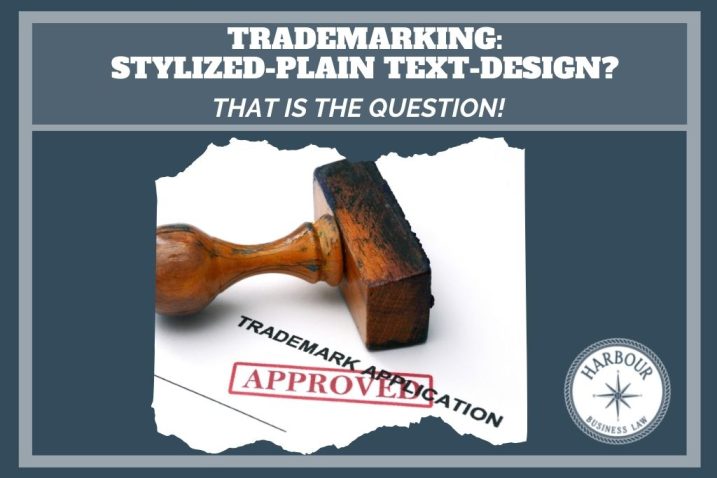
By: Katelyn J. Dougherty, Esq.
Updated: June 6, 2024
When a company has decided on a business model and branding concept, it is time to protect the intellectual property and file a trademark application. The application can be for the company’s logo, name, and/or slogan. Filing for a registered trademark can be a complex and detailed process. This blog provides insights on one of the first decisions that will need to be made. Should you file a “stylized” mark, a “plain text” mark, or a combination thereof?
A “stylized text” or “special form” refers to a trademark that includes words, numbers, or design elements presented in a specific font, size, and/or color. For instance, if your mark consistently uses a particular color, and that color is key to your brand, you would specify that color when filing the trademark. However, if you want the flexibility to use the mark in various colors, you would apply for the mark in black and white, without making a color claim.
A plain text mark, also referred to as a “standard character” or “typed drawing,” consists solely of words, letters, and/or numbers in a basic, everyday writing style, like the text you see here. It doesn’t include any images, graphics, or logos. Standard character marks are always in black and white, unlike stylized text, which can feature colors or design elements. When filing a plain text mark, you’re not claiming any specific font, size, or color, meaning the mark has no design or stylistic characteristics. For example, our firm’s plain text mark is “Harbour Business Law.”
There is also a third option known as a “design plus mark.” This type of trademark registration includes more than just words and numbers; it also covers specific colors, designs, logos, graphics, or other distinctive elements related to your brand. While similar to a stylized mark, a design plus mark differs in that it always includes some form of image, photo, or graphic, whereas a stylized mark may consist of just words without any visual elements.
_____________________________________________________
Don’t have a business attorney? Get in touch with our team by emailing Info@harbourbusinesslaw.com.
_____________________________________________________
DISCLAIMER: This blog is for educational purposes only and does not offer nor substitute legal advice. This blog does not establish an attorney-client relationship and is not for advertising or solicitation purposes. Any of the content contained herein shall not be used to make any decision without first consulting an attorney. The hiring of an attorney is an important decision not to be based on advertisements or blogs. Harbour Business Law expressly disclaims any and all liability in regard to any actions, or lack thereof, based on any contents of this blog.